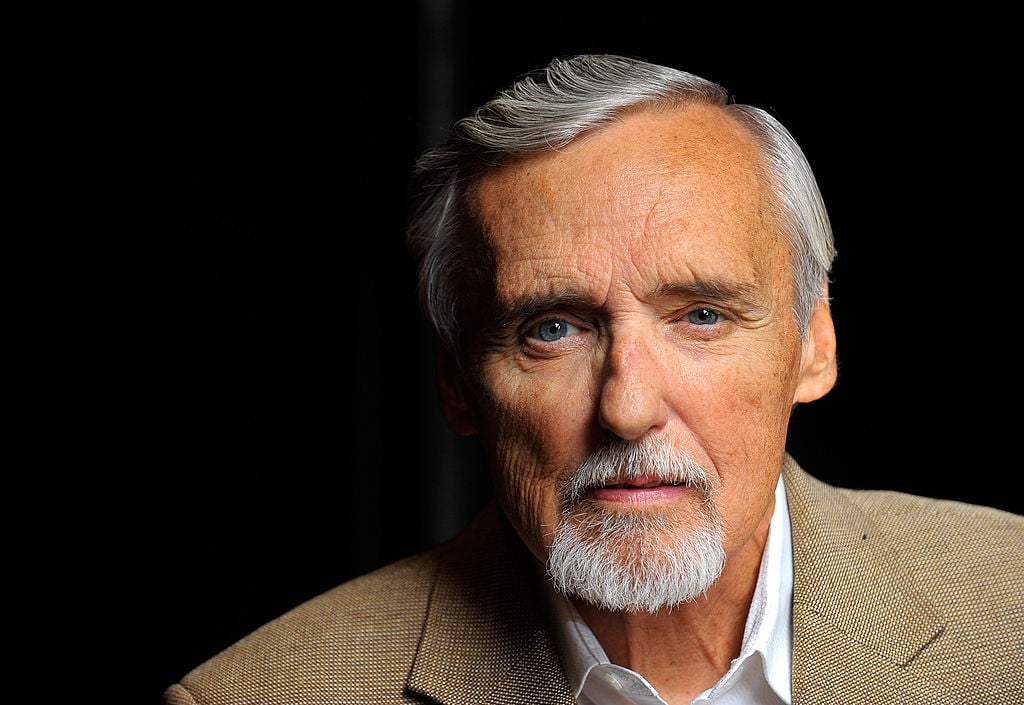
Dennis Hopper’s Lost Album, a trove of photographs taken by the artist and Hollywood star throughout the 1960s, is coming home to Los Angeles, where the entire group of over 400 images will go on display at Kohn Gallery.
Dennis Hopper, Selma, Alabama (Full Employment) (1965). Courtesy of the Hopper Art Trust and Kohn Gallery.
After Hopper’s death in 2010 five boxes of photographic prints were discovered in the artist’s garage, including images from his first museum retrospective at the Fort Worth Art Center Museum in 1970.
Dennis Hopper, Biker (1964). Courtesy of the Hopper Art Trust and Kohn Gallery.
The photos, taken between 1961 and 1967, depict Hopper’s friends and contemporaries, including intimate images of Robert Rauschenberg, Andy Warhol, Paul Newman, and Jane Fonda.
But his photographs also document the sociopolitical upheaval in the 1960s, including momentous events such as the civil rights marches led by Martin Luther King as well as insights into the origins of the iconic American subcultures of biker gangs and the hippie movement.
Dennis Hopper, Martin Luther King Jr. (1965). Courtesy of the Hopper Art Trust and Kohn Gallery.
Speaking to artnet News, curators Sam Mellon and Claudia Bohn-Spector explained that their aim is to highlight the artistic value of Hopper’s photography, which has frequently been taken out of context.
Dennis Hopper, Ed Ruscha (1964). Courtesy of the Hopper Art Trust and Kohn Gallery.
“I think people are really going to respond to recognizing Dennis’ as a photographer, not just an actor, celebrity, and director, who hopped around Los Angeles and snapped a couple of pictures,” co-curator Sam Mellon told artnet News on the phone. “I think Dennis’ work is much less driven by celebrity, and much more driven by aesthetics and composition.”
Dennis Hopper Paul Newman (1964). Photo: Courtesy of The Hopper Art Trust and Kohn Gallery.
“Dennis’ project was much bigger,”agreed co-curator Claudia Bohn-Spector. “He was aiming at nothing less than creating a picture of his time and place in 1960s. And he does it by photographing actors and musicians, but also by documenting civil rights marches, love-ins, and motorcycle gangs.”
“And don’t forget all these people that we now think of as famous artists were just a bunch of guys hanging around the Ferus Gallery,” she explained.
Dennis Hopper, Robert Rauschenberg (1966). Courtesy of the Hopper Art Trust and Kohn Gallery.
In fact, according to Hopper’s daughter Marin, the actor and filmmaker wished to be remembered as a photographer:
“I think that when reflecting on his own mortality, he looked back on photography as something that was less acknowledged, but was of major importance to him as a creative outlet. He wanted to be remembered as having a really very dedicated practice for photography, and he did,” she said.
Dennis Hopper Ike and Tina Turner (1965). Photo: Courtesy of The Hopper Art Trust and Kohn Gallery.
“Dennis Hopper: The Last Album” will be on view at Kohn Gallery, Los Angeles, from July 8 – September 1, 2017.